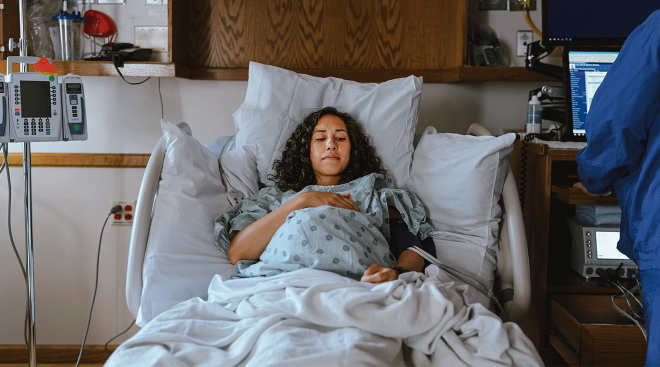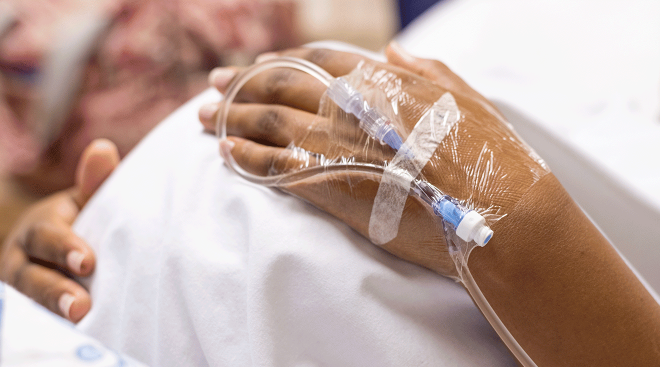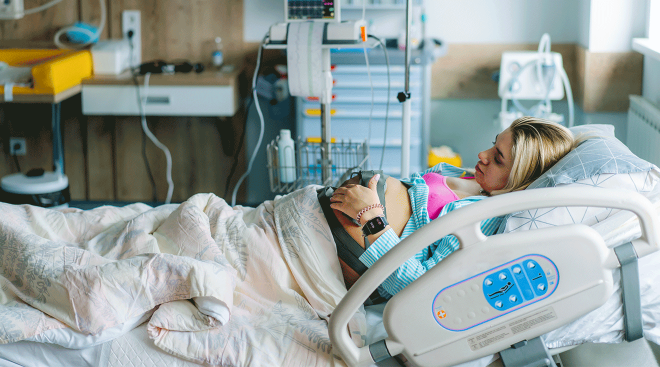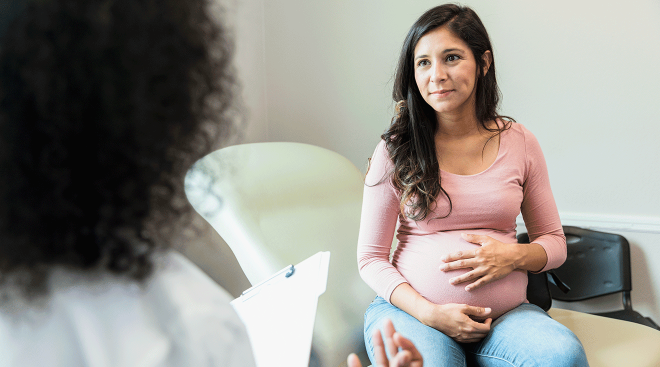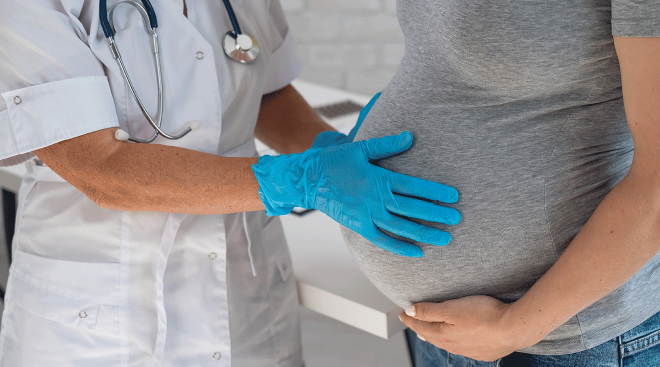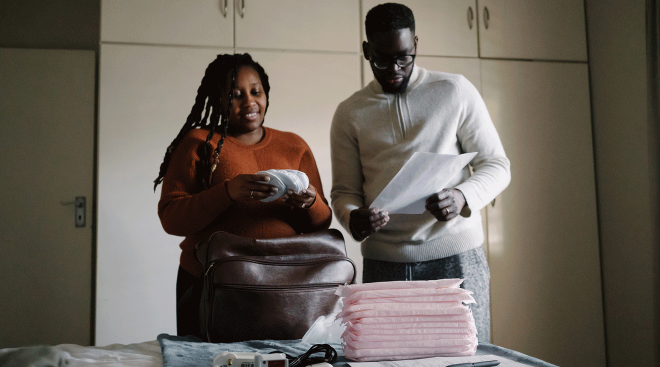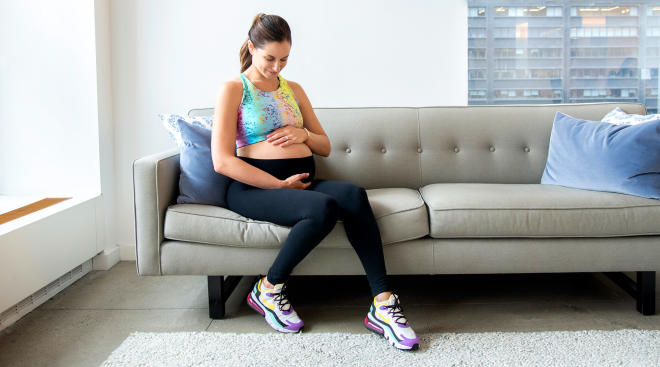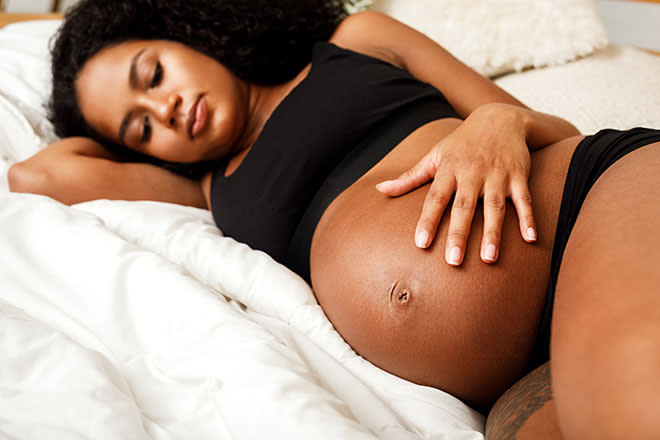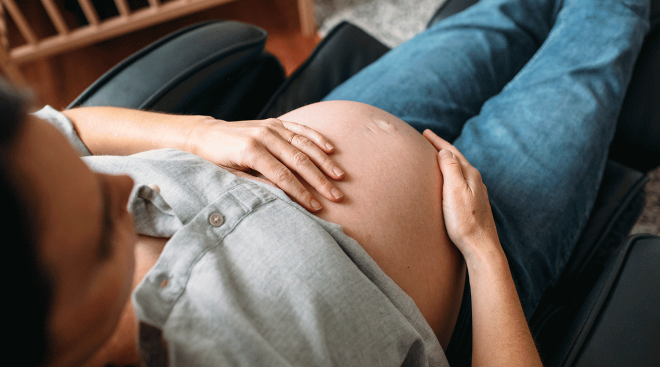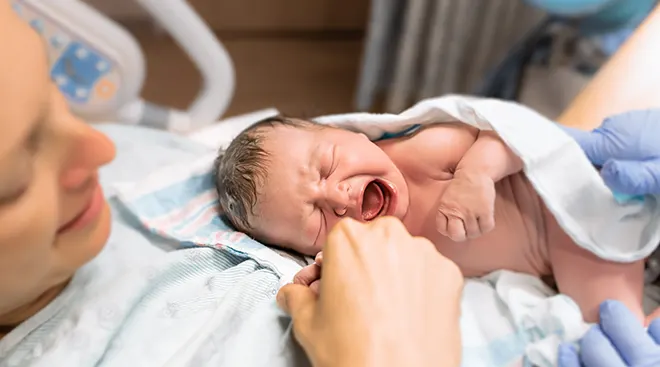How to Recognize the Signs of Labor
How will you know when it’s time to grab your hospital bag and get to the delivery room? It can be unnerving trying to determine if it’s the main event or just a false alarm (hello again, Braxton Hicks). And while it’s not always crystal clear, the good news is that your body usually gives you some pretty solid clues. Ready to get a leg up on what early labor feels like? Read on to learn about the common signs of labor, and what you should do if you experience them.
Sorry to say that it’s not as simple as waiting for your due date—that’s just an estimate, and there’s really no telling exactly when baby will arrive. Ninety percent of women go into labor between 37 and 42 weeks, according to William Schweizer, MD, clinical associate professor in the department of obstetrics and gynecology at NYU Langone Medical Center in New York City—and that’s quite a window of time. Keep in mind too that some women may deliver before 37 weeks (which would be considered a preterm birth); others, who go past 41 weeks, may wind up getting induced, depending on your doctor and your hospital’s policies.
As your due date nears, every funny feeling or fleeting cramp in your belly will have you wondering: Is this it? Are these the first signs of labor? False labor signs (aka Braxton-Hicks) can sometimes be confused with real labor contractions, but they do have some distinct characteristics. This nonproductive “labor” usually consists of nonpainful, irregular contractions, says Colleen Moreno, DNP, a certified nurse-midwife at Stanford Children’s Health, a network of practices and hospitals in the San Francisco Bay area. “The uterus is a growing and stretching muscle; therefore, it cramps as it adjusts to the growth.”
You probably are feeling false signs of labor if the contractions:
- arrive at irregular intervals
- don’t worsen over time
- are not painful, or the pain recedes when you walk around
- don’t keep you from speaking
On the other hand, you are probably feeling real signs of labor if the contractions:
- increase and decrease with fetal activity
- are centered in your pelvic area
- arrive at regular intervals (if they come on every five minutes or closer, and each lasts more than 45 seconds, prepare yourself—labor is starting!)
Don’t spend too much time analyzing, though: If you think you’re in the early stages of labor, call your doctor. Identifying the early signs of labor can be confusing, so there’s no harm in checking in or erring on the side of caution!
Many of the signs of labor that precede actual labor mirror typical pregnancy symptoms, which is why it can be so difficult to tell exactly when labor begins. Chances are, you’ll realize these subtle changes in your body only in hindsight. Still, knowing what to look for can help. Below, some signs that labor is near:
Nesting
One of the more subtle signs labor is near? An abrupt burst of energy. After months of pregnancy exhaustion you may suddenly feel motivated to do all the things in preparation for baby’s arrival. Nesting is a common occurrence among soon-to-be moms, notes the Mayo Clinic. Of course, this, too, can happen a few weeks before labor starts. Still, it’s a reminder that the big debut is right around the corner.
Nausea and diarrhea
Remember morning sickness? It probably seems like ages ago at this point! But many women experience gastrointestinal upset late in the third trimester as well, and wonder, “Is diarrhea a sign of labor?” or maybe, “Is nausea a sign of labor?” Nausea and vomiting in the final weeks of pregnancy happen mostly because baby is growing and the uterus crowds into the space of the GI tract (stomach and intestines), says Moreno. But they could also be early signs of labor. As the big event approaches, key hormones cause your muscles to relax and loosen—including those in your rectum. So, yes, diarrhea may be a telling clue.
Lightening
As you approach delivery day, a friend or loved one might look you up and down and inform you that “baby has dropped.” This is called lightening; it means that baby has settled lower into your pelvis in preparation for the big event. It typically occurs a few days (or weeks) before labor, according to the American Pregnancy Association. You may suddenly also have an easier time breathing, as there’s now less pressure on your diaphragm. Unfortunately, there’s increased pressure on your bladder. Don’t worry, the middle-of-the-night potty trips will come to an end soon enough.
Loosening of the joints
If your body is starting to feel a little looser and more relaxed, it’s not a coincidence. In fact, it may be one of the early signs of labor. Your body releases the joint-loosening hormone relaxin during the final stretch of pregnancy; it helps ready your body for the major feat ahead, but may also make you feel extra flexible—just be careful not to overstretch!
Effacement and dilation
In the last few weeks of pregnancy, you’ll be visiting your doctor more frequently—and they’ll start checking your cervix for effacement (thinning) and dilation (opening). While it may be encouraging to hear that things are progressing, don’t get too excited yet. This process can be swift and sudden or slow and steady; it may happen over the course of days or weeks.
Cramping
By this point in your pregnancy, you’ve probably experienced just about every type of cramp possible. Well, except for one very important (and painful!) type. Often, true labor contractions begin as a crampy feeling in your back and lower belly, combined with (oh joy!) pressure in the pelvis.
Lower back pain
Contractions can often begin in the back and move forward to the pelvis. And some women do experience “back labor,” which is characterized by severe discomfort in the lower back that is most intense during contractions and often painful between contractions.
Expulsion of the mucus plug
Before baby can be delivered, your cervix has to thin out and open up, and as that happens, the mucus plug—a thick, mucus-like membrane that’s been blocking bacteria from entering your uterus—is pushed out. The mucus plug could be released all at once or little by little like a thick discharge. While this is one of the signs labor is near, it doesn’t necessarily mean you’ll be delivering your baby super soon. Labor could be hours, days or even weeks away as the cervix gradually opens.
Blood-tinged discharge
When your mucus plug is expelled, some of the surrounding blood vessels may burst, leading to slightly bloody discharge. Sometimes called the “bloody show,” this discharge is one of the signs that labor is near, anywhere from minutes to up to two weeks away, Schweizer says. If you picture the size of a quarter, it’s normal to see about 50 cents worth of blood, he adds. If the bleeding is as heavy as your menstrual period, let your doctor know right away.
If those symptoms you’re experiencing really are early signs of labor, you can be sure that things will really start to kick into action soon. Here are some typical indicators that you’ve progressed from the early signs of labor to actual active labor:
Rupturing of the amniotic sac (aka water breaking)
Despite what movies will have us believe, how your water breaks (in other words, how the membranes of the amniotic sac burst) can vary a lot, Schweizer says: It could be a minimal trickle or more like a gushing sensation. It may even feel like you’re peeing—but if you squeeze your pelvic muscles and can’t control the leaking, it’s probably not urine. Keep in mind, though, not all women’s water will break—in fact, only about 10 percent experience a rupturing of the membranes. If your water breaks and you’re experiencing contractions, this is one of the biggest signs of labor. But if contractions haven’t set in yet, your doctor may want you to wait a few hours before coming in. If the liquid is red, brown or green in color, or if you see more than a quarter of a cup of fluid, call your doctor.
Regular, painful contractions
It’s inevitable—at some point you’ll realize that crampy feeling you’re having might be more than just cramps. They’ll change to regular contractions, which indicate your body is beginning the process of birthing baby. The best thing to do? Relax as much as you can, get comfortable or perhaps take a shower. Time the contractions and head to the hospital or birthing center when they become about five minutes apart.
Increased pelvic and rectal pressure
Pelvic pressure is a common sign during the later stages of labor. You may feel pressure in your rectum too. Moreno describes it as a feeling “similar to needing to have a bowel movement.” Get ready, because this means that baby’s really on the way!
Your doctor will give you instructions on what to do and when to call if you start experiencing signs of labor. But if you’re unsure or have any disconcerting symptoms, don’t hesitate to reach out right away. And if this isn’t your first baby, you’ll want to keep in mind that things might move faster this time around. Either way, you’ll want to get in touch with your practitioner right away if you experience any or all of the following:
- Contractions that last for at least 30 seconds and are five minutes apart for about an hour
- Strong contractions you can’t talk or walk through
- Your water breaks—especially if it’s red, brown or green
- You’re bleeding (more than spotting)
What’s more, if you have reason to suspect you’re in preterm labor (before Week 37), call your doctor right away.
Your body will give you lots of physical cues in advance of baby’s debut. Still, validating these early signs of labor can be challenging—especially for first time moms. You may wonder: “Is this the real deal?” The answer: Only time will tell. Try to stay calm, monitor your contractions and don’t be embarrassed to call your doctor—even if you’re not entirely confident it’s go time. Rest assured that baby is coming (sooner or later!). You’ve got this.
About the experts:
Colleen Moreno, DNP, CNM, is a certified nurse-midwife at Stanford Children’s Health, a network of practices and hospitals in the San Francisco Bay area. She earned her doctor of nursing practice degree at the University of Washington in Seattle.
William Schweizer, MD, clinical associate professor in the department of obstetrics and gynecology at NYU Langone Medical Center in New York City. He earned his medical degree from SUNY Stony Brook.
Please note: The Bump and the materials and information it contains are not intended to, and do not constitute, medical or other health advice or diagnosis and should not be used as such. You should always consult with a qualified physician or health professional about your specific circumstances.
Plus, more from The Bump:
Navigate forward to interact with the calendar and select a date. Press the question mark key to get the keyboard shortcuts for changing dates.


































